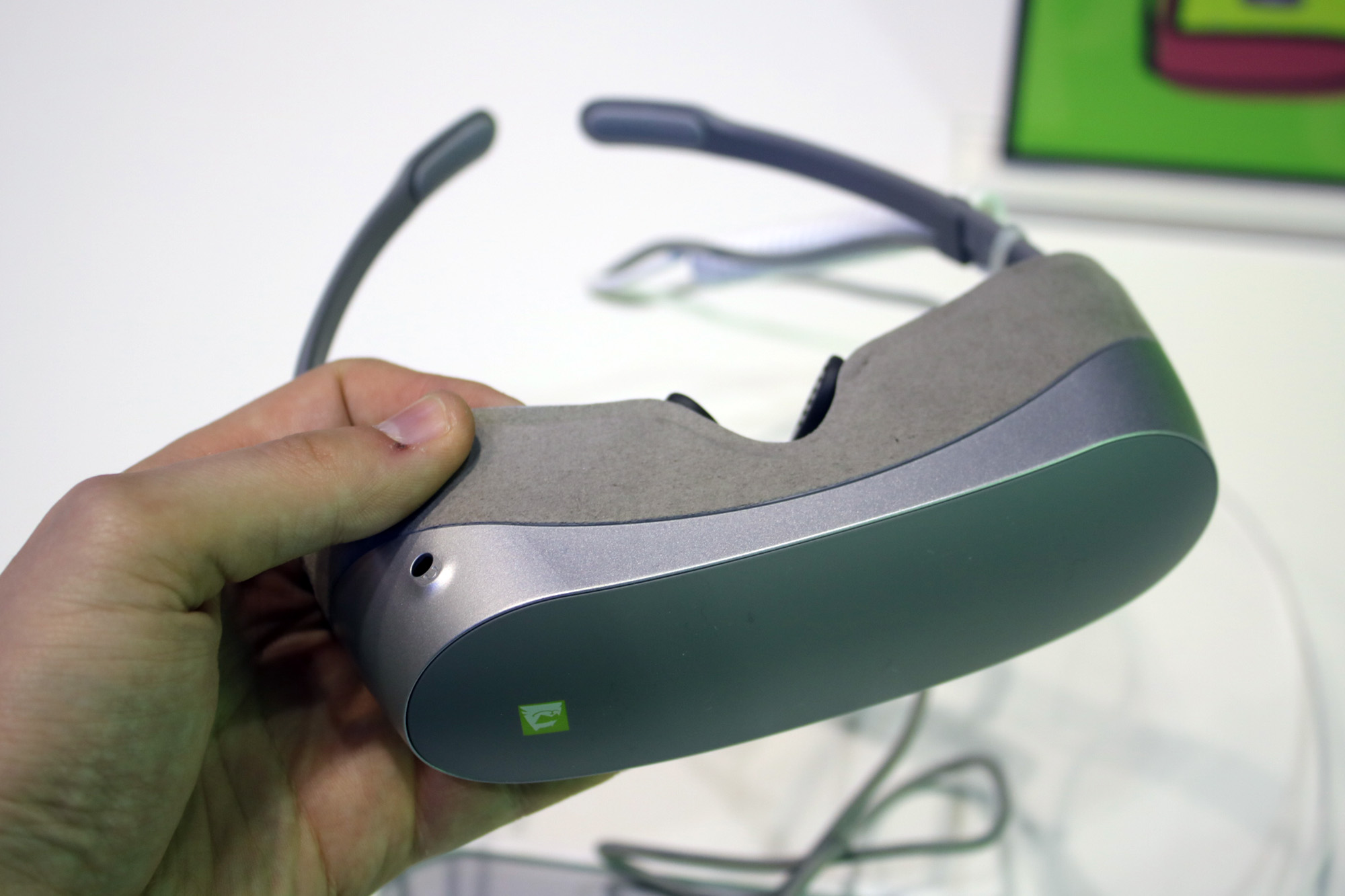
It seems the rumours were true, Samsung and HTC are no longer the only mobile OEMs with virtual reality ambitions. LG wants in on the burgeoning VR technology industry with its recently announced LG 360 VR headset.
Following the company’s big G5 reveal yesterday, I tried the LG 360 for a brief period of time at LG’s busy G5 demo space, while jostled between over eager journalists, all vying for a chance to get a look at the device. Following my initial encounter with the LG 360, I walked away considerably underwhelmed, and couldn’t understand what LG was trying to accomplish with the headset.
However, my second, significantly more intensive hands-on with the LG 360 left me with a completely different impression of the device.
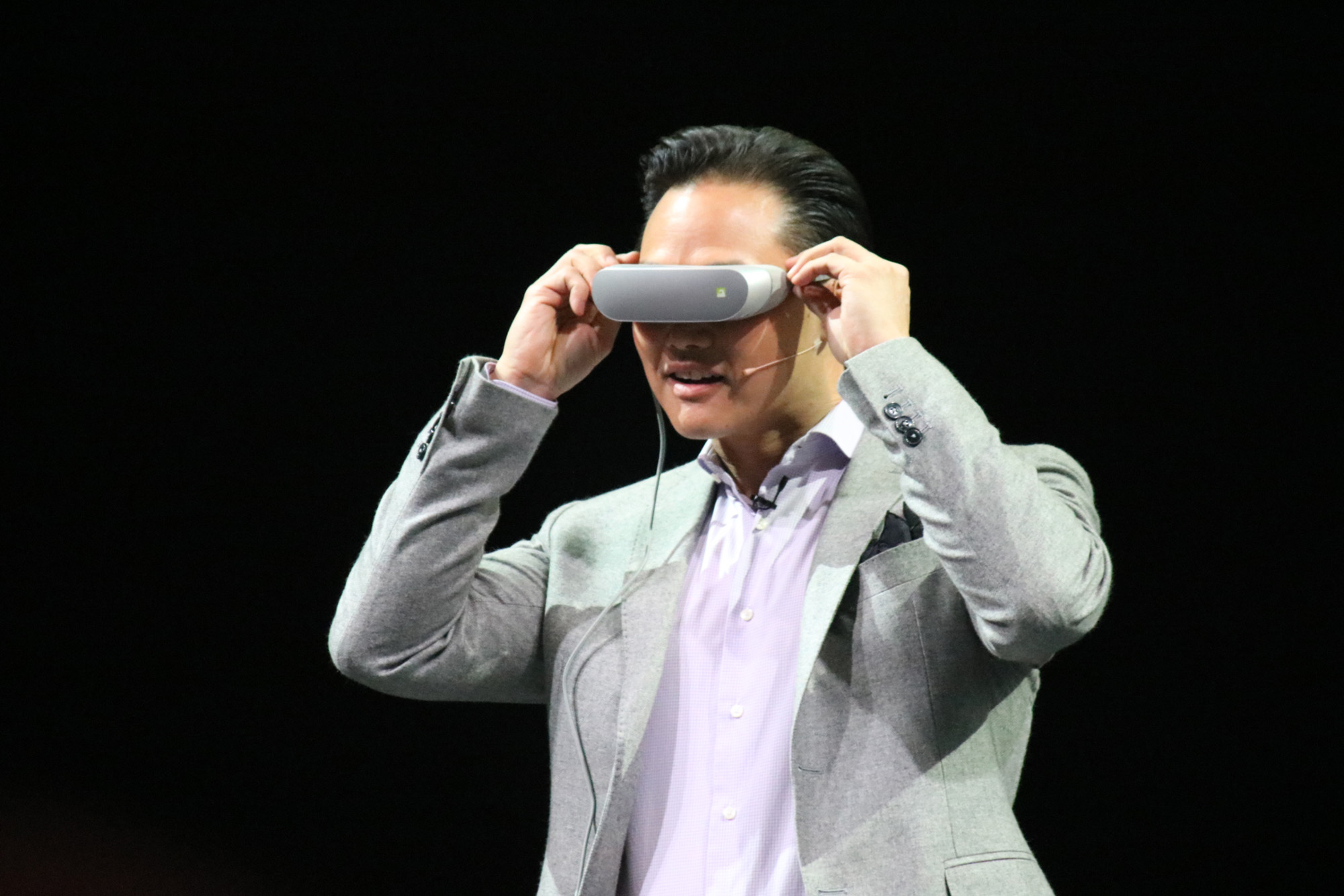 LG’s 360 VR initially seems like an ill-fated attempt at grabbing a slice of the virtual reality market, and in some ways this is an accurate perception of the device. LG’s new “friends” virtual reality accessory could end up becoming more than this though, creating a cost-effective virtual reality product category that falls somewhere between the Gear VR and full-fledged headsets like the Oculus Rift and HTC Vive.
LG’s 360 VR initially seems like an ill-fated attempt at grabbing a slice of the virtual reality market, and in some ways this is an accurate perception of the device. LG’s new “friends” virtual reality accessory could end up becoming more than this though, creating a cost-effective virtual reality product category that falls somewhere between the Gear VR and full-fledged headsets like the Oculus Rift and HTC Vive.
To the surprise of many, unlike the Gear VR, which requires an S6, S6 edge or Note 5 device to operate, or even Google Cardboard, which is compatible with a variety of Android devices, LG’s 360 VR is, to some extent, an untethered VR device (more on that later).
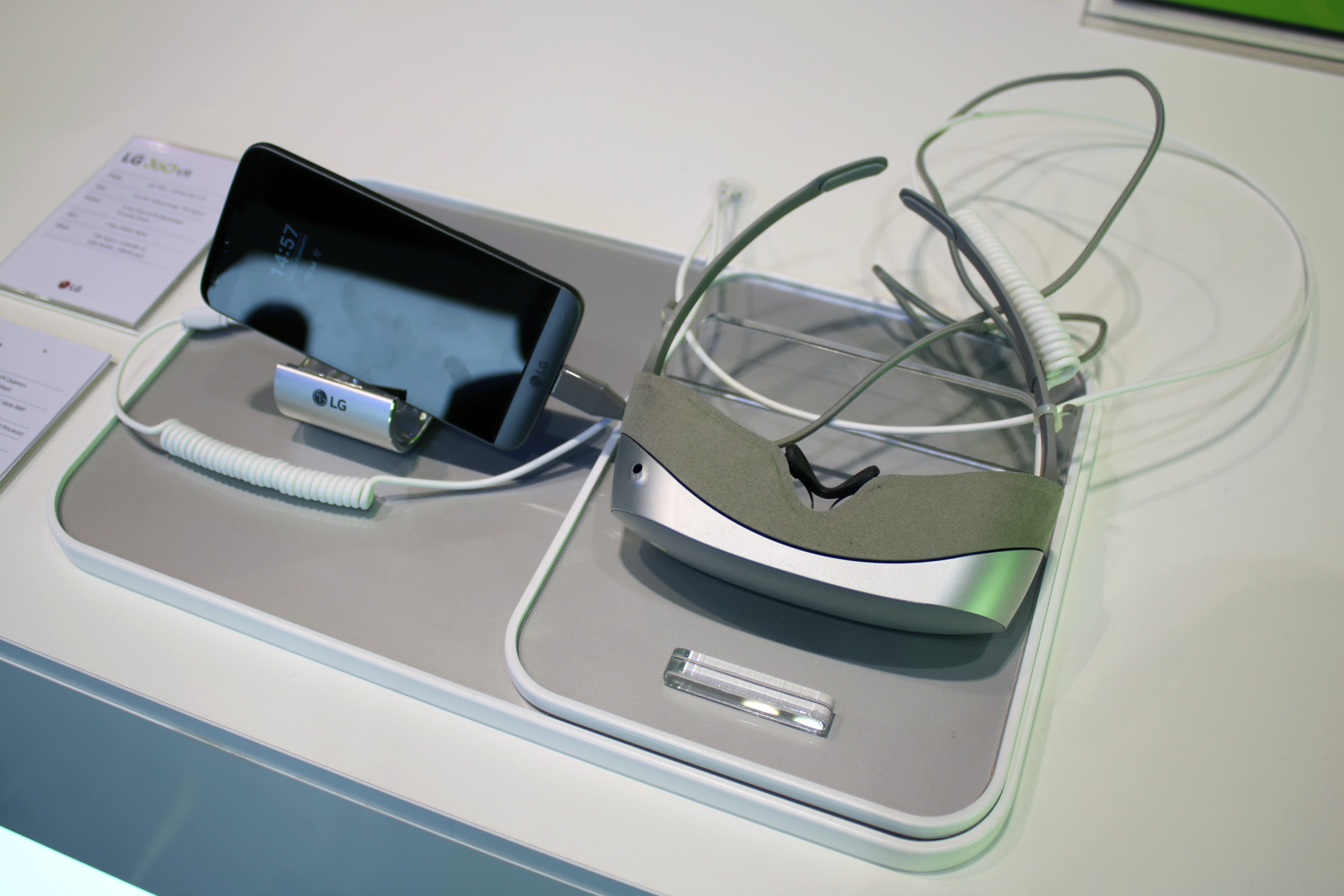 Similar to the Oculus Rift or HTC Vive, the LG 360 features two 1.8-inch displays, separating the video feed to both the wearer’s eyes, creating a virtual reality image. The LG 360’s small 960 by 720 screen size results in a pixel density of 638, a number that’s impressively only slightly lower than what’s available on the Oculus Rift and HTC Vive, but significantly above the Cardboard and Gear. This results in a crisper image and negates how noticeable pixels are when using the device.
Similar to the Oculus Rift or HTC Vive, the LG 360 features two 1.8-inch displays, separating the video feed to both the wearer’s eyes, creating a virtual reality image. The LG 360’s small 960 by 720 screen size results in a pixel density of 638, a number that’s impressively only slightly lower than what’s available on the Oculus Rift and HTC Vive, but significantly above the Cardboard and Gear. This results in a crisper image and negates how noticeable pixels are when using the device.
It’s worth pointing out the crispness of the 360’s display likely won’t be noticed by the average user, but for someone like myself who has used almost every VR headset on the market over the last few years, this is a significant shift. Unlike the Oculus Rift or HTC Vive, the LG 360 doesn’t require a high-end dedicated desktop computer to power it. It is instead connected to the LG G5 via USB and relies on the device’s hardware to perform the heavy lifting. So while it initially seemed like the G5 would be completely untethered, that isn’t the case.
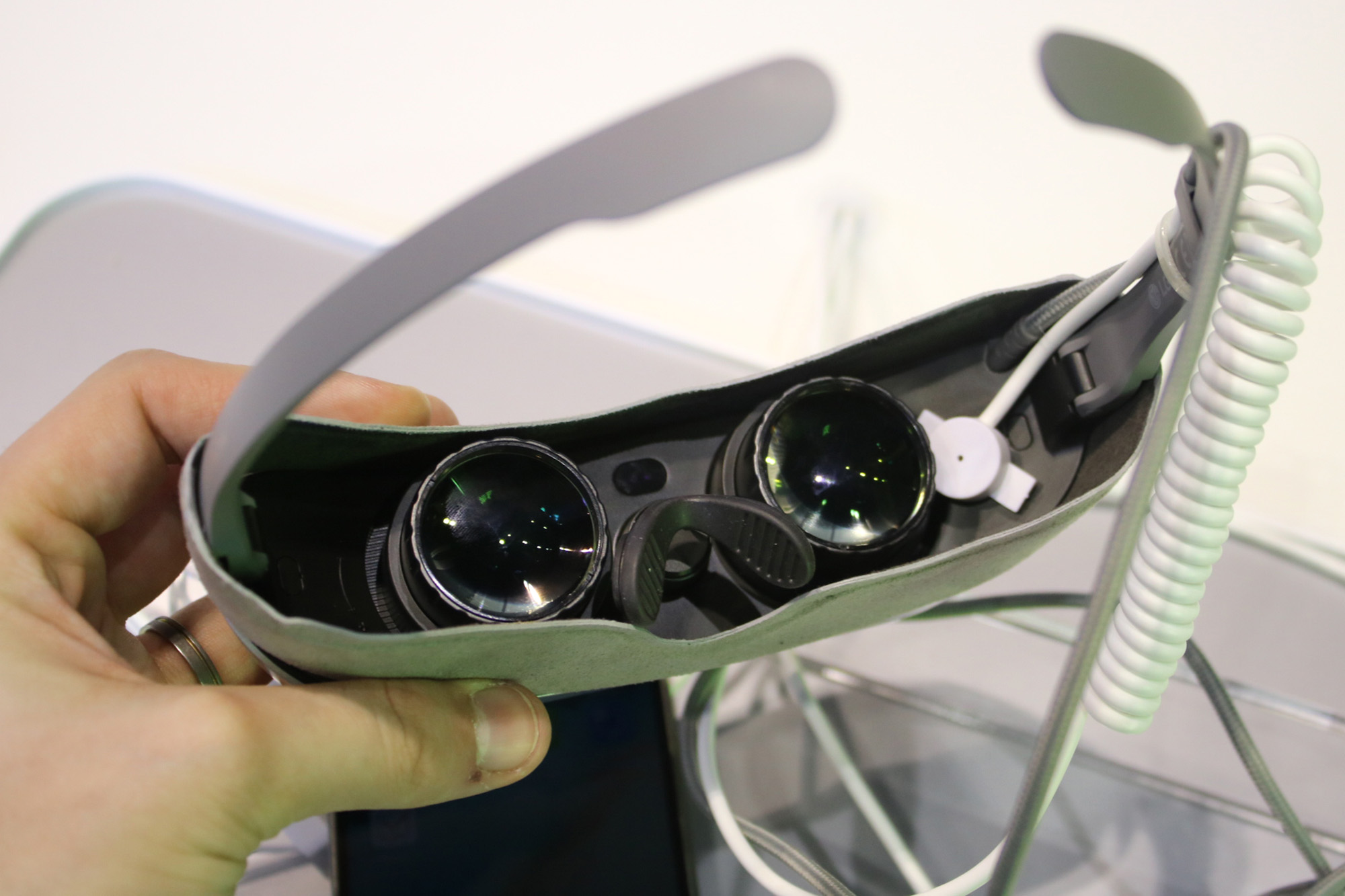 LG’s 360 VR, weighing in at just 117g, is also the lightest VR headset available right now. It is approximately a third of the weight of most VR headsets. Because it’s relatively light, I found myself forgetting I was even wearing a VR headset when testing out the 360 VR the second time. LG claims the company designed the 360 VR with a “cool” factor in mind, and while I don’t think many people will feel comfortable wearing the headset in public as LG suggests, it’s certainly one of the sleekest VR devices I’ve encountered. Although, it’s worth pointing out the 360 VR’s small size means that light does manage to sneak through the headset’s cover.
LG’s 360 VR, weighing in at just 117g, is also the lightest VR headset available right now. It is approximately a third of the weight of most VR headsets. Because it’s relatively light, I found myself forgetting I was even wearing a VR headset when testing out the 360 VR the second time. LG claims the company designed the 360 VR with a “cool” factor in mind, and while I don’t think many people will feel comfortable wearing the headset in public as LG suggests, it’s certainly one of the sleekest VR devices I’ve encountered. Although, it’s worth pointing out the 360 VR’s small size means that light does manage to sneak through the headset’s cover.
The 360 VR’s controls are relatively standard; it features two input options on the top right side of its body that work as a select button and a back button. Here’s where the negative side of the device comes into play. Only a handful of demos are currently available on the G5 and most of the static images or experiences can’t stand up to what is available through Samsung’s Milk VR platform. On the plus side, LG’s 360 is compatible with YouTube 360 videos, as well as Google Cardboard apps, though there could be some compatibility issues (LG claims running Cardboard apps on the 360 won’t be a problem).
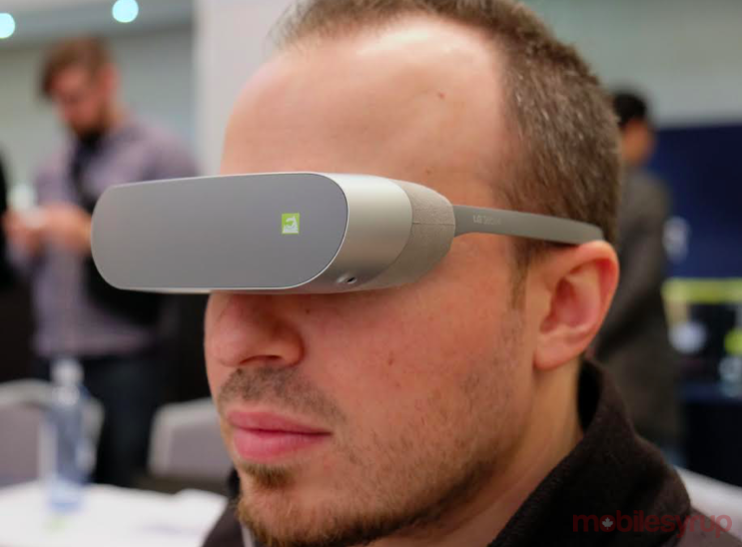 The main demo shown off on the show floor was impressive and moved users through a virtual rollercoaster, complete with moving chairs. While this demo is undeniably compelling, it’s very similar to other demos I’ve experienced before with different VR headsets. Hopefully LG shows off the company’s new VR headset in the future with a more inventive demo.
The main demo shown off on the show floor was impressive and moved users through a virtual rollercoaster, complete with moving chairs. While this demo is undeniably compelling, it’s very similar to other demos I’ve experienced before with different VR headsets. Hopefully LG shows off the company’s new VR headset in the future with a more inventive demo.
Furthermore, LG claims it has video game and app developers signed on to work on content for the device, but hasn’t revealed specific software partners yet. Like many smaller scale VR headsets, the 360 VR will fail or soar depending on what software is available for it. For the moment, unfortunately, there seem to be few apps worth using with LG’s 360 VR. Another negative I noticed is adjusting the headset’s two VR lenses is somewhat finicky, easily resulting in one side of the device being slightly off.
Pricing hasn’t been revealed yet, but it’s likely the LG’s 360 VR will be priced considerably under both Oculus and Vive’s price tags, falling somewhere in between the cost of those devices and the $129 Gear VR.
Related reading: LG G5 Hands-on: Modular is the new playground
MobileSyrup may earn a commission from purchases made via our links, which helps fund the journalism we provide free on our website. These links do not influence our editorial content. Support us here.


